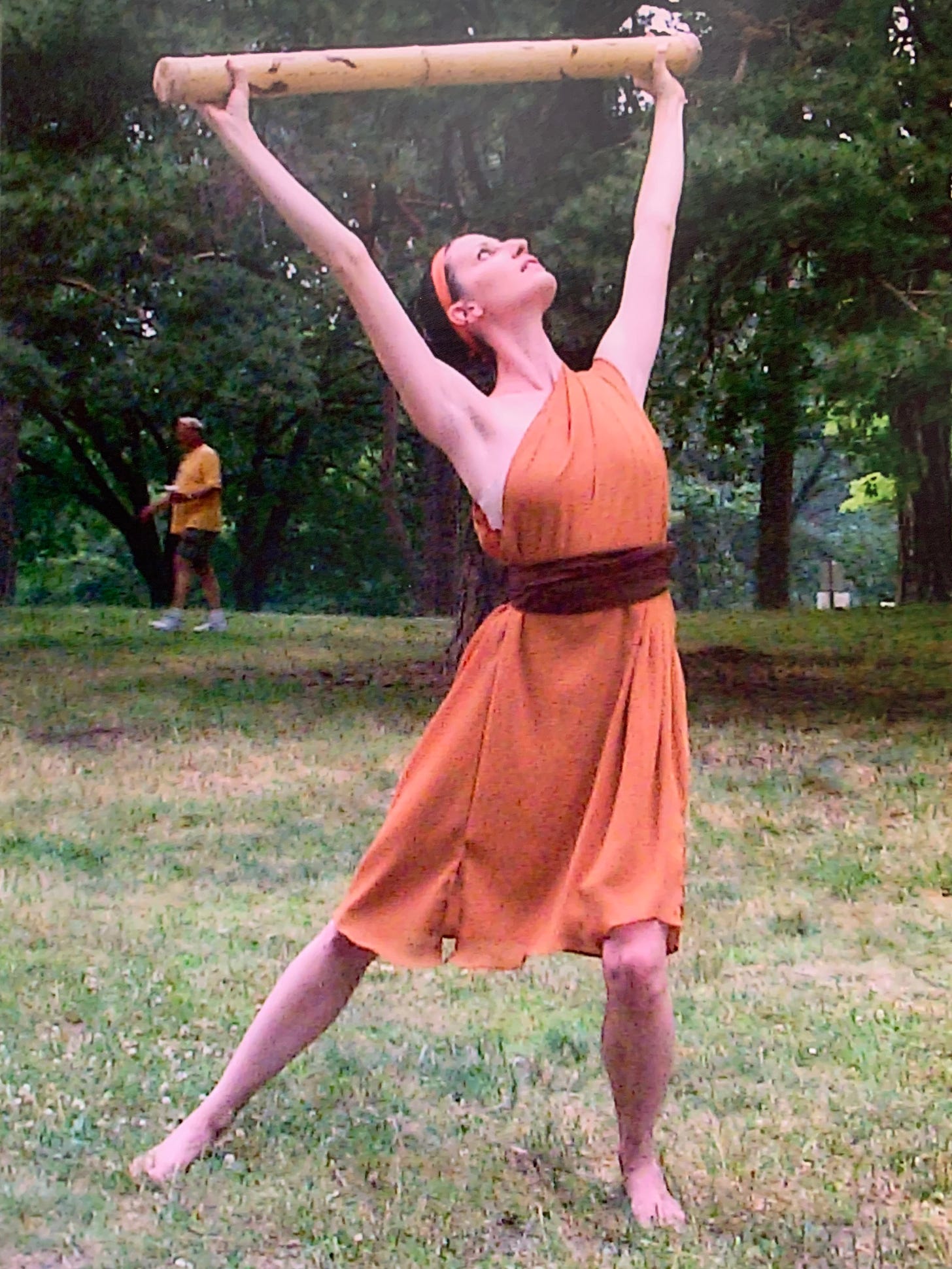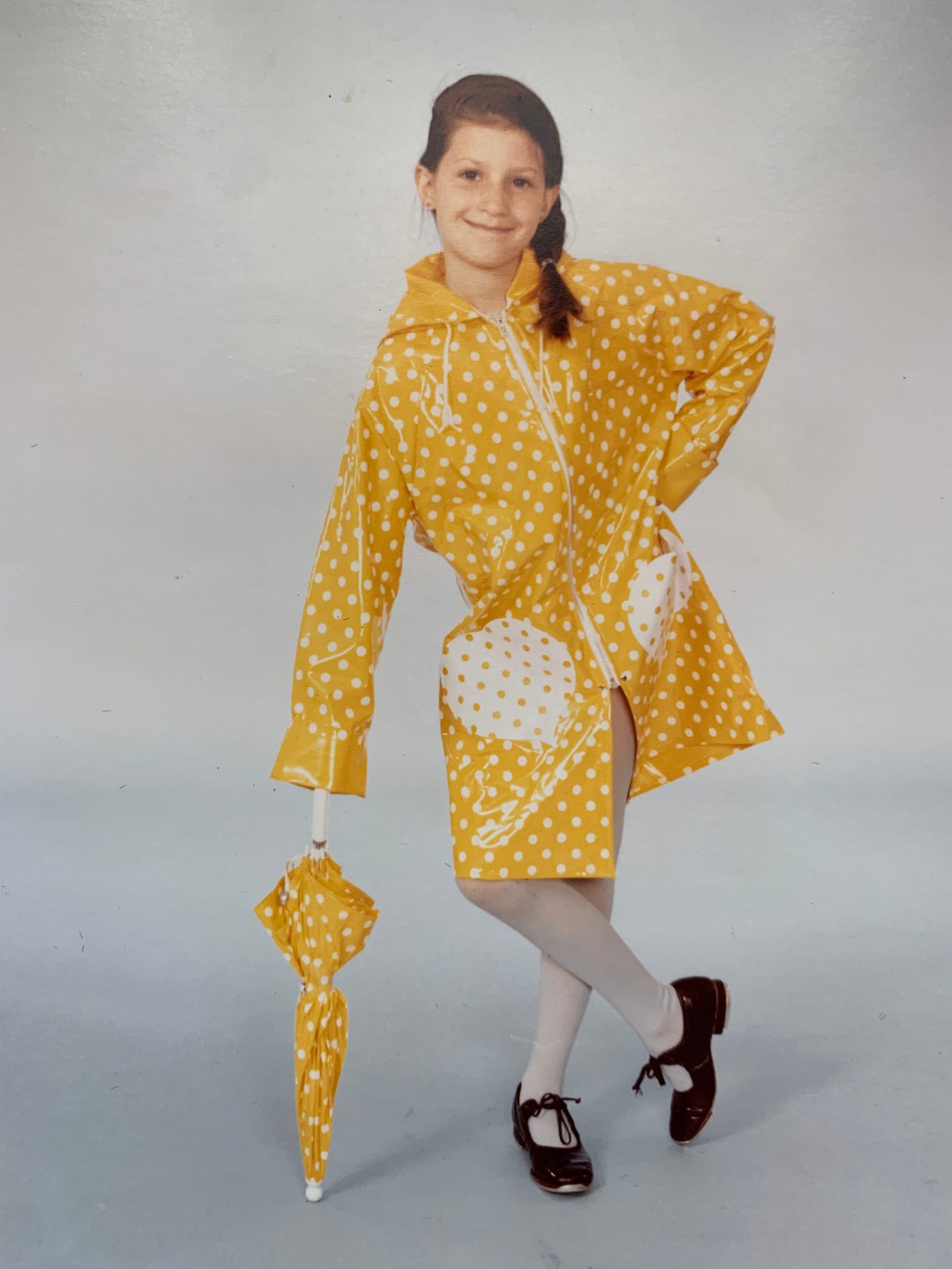
Ideas come to life and dance in my head once my feet have done some dancing of their own. It has always been this way. My brain is a component of my biology — it is part of my body after all. Like the rest of me, it needs blood flow and oxygen to keep the creative juices flowing. I believe this to be true for all creatives.
While out on a walk this morning, an idea came to me for the school newsletter I’m writing for work. It began to take shape in my head as my feet and heart pounded a rhythm. I was climbing up a steep hill, finding tree roots to stabilize my footing as the slippery mud threatened to slide from its place on the earth and would no doubt take me with it.
This is just one of innumerable examples of how moving my body has gotten me out of a slump. As I sit here to write, now safely back home, I’m feeling energized from the hike. It has cleared the fogginess that had engulfed me earlier this morning as I sat down with my coffee, stagnation threatening to set in. When this happens, it feels like oxygen can no longer reach my brain. The energy seeps out of me and with it go the thoughts that could manifest something out of nothing. That won’t do. I need clarity. I need inspiration. But I know that inspiration doesn’t just fall from the sky. It needs to be sought after, gathered like twigs and sticks for kindling, arranged lovingly into a pile with just enough space, then lit and tended to, and perhaps lit again. It needs attention and care.
When I find myself spinning on a merry-go-round with the same old thoughts, I know I need to get off the ride and wander onto a forest trail that leads somewhere — to beauty and light and air — and the possibility of something ready to be brought to life.
I’m no stranger to physical activity. I’ve been dancing since I was able to walk — probably sooner. My mom has told me, more than once, about my earliest adventures as an infant, when she thought she could plop me safely onto the middle of her bed (it turns out she was mistaken). I would be on my belly, arms straight out to the sides like an airplane, legs stretched behind me, and rock all the way over to the edge of the bed in apparent bliss. I practically hovered above the mattress as if trying to take off. It was very impressive, I’m told. But my mom realized I couldn’t be trusted to just lie there passively. Trying to keep me still only became more challenging from then on.
There was the time when, as a kid, I had to get stitches from splitting my chin open after falling off the table I’d been dancing on in a coffee store in Toronto’s Kensington Market. I still have the scar as a reminder.
I’ve always had a strong need to move. I used my affinity and aptitude for movement to my advantage during my years as a dancer. Although I don’t dance professionally anymore, it still brings me so much joy on the rare occasions I’m at a party or seeing a live band and can let loose. Dancing feels so liberating, so joyous. I don’t have to think, but I do need to be present. I love to feel my body move in space, enjoying the rush as energy surges through me and feel-good chemicals are released. I’m the most alive when I’m dancing. Not only does my body vibrate, but my mind does too.
Although my dance background makes me feel the need to move, perhaps more acutely than some, it is still a need shared by all of us. Modern societies have evolved, and technology allows us to spend our whole day sitting in one place (if we allow ourselves), and still manage to get food — it can even come right to our doors. No need to hunt, gather or farm for our nourishment. Those of us who live in developed countries don’t need to walk for miles to get water and we have machines to do our washing. So it can be too easy to settle comfortably into that convenience. But our bodies haven’t evolved as quickly as the world we’ve created. This gap makes it that much more important for us to listen to our bodies’ signals. We need to intentionally put movement back into our days, not only for our well-being, but in order to feed our creative souls. Movement allows our brains to function better. Moving helps us think.
Many years ago, when I was dancing with the small dance company I co-founded, I worked closely with my mentor and friend, Patricia Beatty. Trish, as she liked to be called, was an accomplished leader in the modern dance world as one of the founders of the well-established Toronto Dance Theatre. In her later years, she poured her creativity into writing poetry as she moved away from choreographing and teaching. Sadly, Trish passed away from cancer several years ago, but she left an indelible mark on everyone whose life she touched, leaving behind a legacy with her school, her company, her choreography, her wisdom and her poetry.
Not surprisingly, dance was one of the recurring themes that Trish wrote about, as was poetry, and the two subjects sometimes overlapped. She was a master of these two arts. This makes sense, as dance is also a language — it is simply one that is articulated through the use of your body rather than with words. Poetry and dance both rely on rhythm, flow, cadence, meaning, feeling, and an arc. Both take you on a journey. Most importantly, they both say something about the human experience.
Trish had a relentless need to move her body. When she wasn’t dancing, she was active some other way, often practicing yoga or riding her bicycle until she was too sick to keep it up. Trish fell off her bike after stubbornly refusing to stop riding while undergoing cancer treatments, and she was forbidden by her doctors to continue. She was finally forced to relinquish some autonomy over her lifestyle choices. Trish may have been more stubborn than some, but she was certainly not unique in her quest for movement, even when it had become unwise to pursue it in the capacity she was used to. Trish was a highly intuitive, creative soul. She understood that movement was what fed her vitality.
In the spirit of this theme of movement as a way to stimulate creative flow, I want to leave you with two poems from Trish’s second book of poetry, Slow Words Dancing.
These are beautiful expressions of Trish’s intimate connection with the two art forms, poetry and dance, as seen through the soul of a dancer and poet. Her words dance right off the page.
(Unnamed)
By Patricia Beatty:
a poet writes from the body
longing to make a blank page
into a sublimely lit stage
where one can behave
with more electricity
than is normally accepted
call it a dance or flame throwing
it doesn’t much matter
but pay attention to it
because like it or not
it could be how you really feel
and this you must know.
And this one (also unnamed):
the sad intensity of his language*
clings to the page
fervent, like the earth-reaching feet
of the serious dancer
who would, by her hungry presence
burn away all artificialities
for poetry too can live in thighs and necks
and singing torsos
never telling stories
simply telling truths
sky rockets of red being
only music understands.
*Pablo Neruda
Thank you as always for reading! This is the first essay I’m including in the 24 Essays Club challenge created by
. I will be writing and posting 24 essays on my Substack publication between now and January 31st, 2025.If you’re interested in practical tips on how to inject some movement into your working day and why, from a health perspective, it’s important to do so, you can check out this post by Brady Holmer of
. It’s full of scientific studies and pictograms. I found it to be very informative .If anyone can prove my point that getting out and walking can bring artful words to the page, it is the wonderful
.While we’re talking about the body and writing, I feel I need to mention
who writes about and teaches embodied writing on Writing in the Dark with Jeannine Ouellette. This post might be a good place to start if you are not familiar with her work.






Babies sing and dance before they can walk!
As a writer, one of the best advice I have received is to go for long walks. The ideas of many stories and poems I have written come directly from the road. This also reveals a lot about emotions that others feel. Sometimes a look in someone else's eyes can reveal a lot about them and that knowledge can turn into a poem.